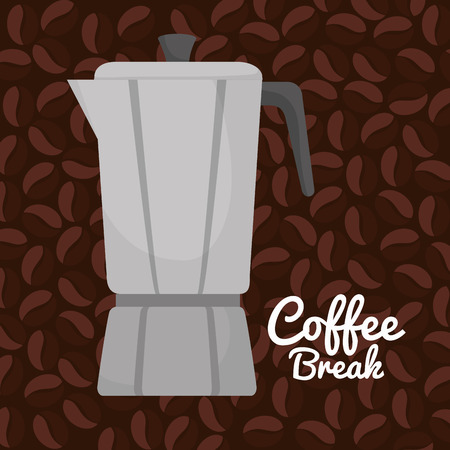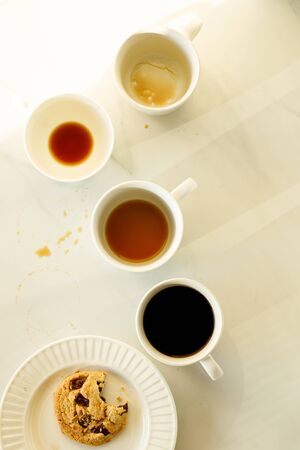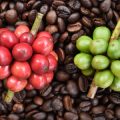1. The British Coffee Culture Explained
Step into any British high street or meander through a charming village, and you’ll find that coffee culture is thriving across the UK. What was once a nation renowned for its love affair with tea has, over the past two decades, embraced the rich aromas and rituals of coffee in all its forms. From the hustle and bustle of London’s artisan cafés to the warm nooks of countryside coffee shops, ordering a cup is now woven into daily life—an essential pause in the midst of work, socialising, or simply watching the world go by. In Britain, coffee isn’t just about caffeine; it’s an experience shaped by local customs, friendly banter with baristas, and an ever-evolving menu that reflects both tradition and trend. Whether you prefer a milky flat white or a bold espresso shot, understanding the nuances of ordering—and appreciating—the perfect brew is key to immersing yourself in this uniquely British ritual.
2. Barista Buzzwords: UK Coffee Terminology Decoded
Stepping into a British coffee shop can feel like entering a world with its own secret code. Understanding the lingo not only makes your order smoother but also helps you appreciate the nuances of UK café culture. While international staples like cappuccino and espresso are universally recognised, British baristas have coined their own set of terms that reflect local preferences and quirks.
The Classics and Their Local Twists
Let’s decode some popular UK-specific coffee terms you’re likely to encounter:
| Term | Description | Distinctly British Touch |
|---|---|---|
| Flat White | A velvety microfoam milk coffee, stronger than a latte but silkier than a cappuccino. | Brought over from Australia/New Zealand, now a staple in UK coffee shops—smaller and stronger than the American-style latte. |
| Skinny Latte | A latte made with skimmed (non-fat) milk. | The word “skinny” is common parlance for low-fat options across the UK. |
| Cortado | Equal parts espresso and steamed milk, served in a small glass. | Gaining popularity for those who want something short but less intense than an espresso. |
| Americano | Espresso topped up with hot water. | Sometimes called “long black” in other countries, but in the UK it’s strictly an Americano. |
| Mocha | A blend of chocolate, espresso, and steamed milk. | This indulgent option is often topped with whipped cream or cocoa powder in British cafés. |
| Soya/Almond/Oat Latte | Lattes prepared with non-dairy alternatives. | The UK has embraced plant-based options, so specifying your preferred milk is totally normal—just mention it at the counter! |
| Builders’ Tea (Honourable Mention) | Strong black tea with milk and sugar—a must-know if you fancy a traditional British caffeine fix! | This isn’t coffee, but no glossary of British café terms would be complete without it. |
Sizing It Up: Small, Regular, or Large?
Unlike the American “tall,” “grande,” and “venti,” most UK coffee houses keep it straightforward: small, regular, or large. Some independent cafés might use quirky names or serve everything in one standard size—so don’t be afraid to ask for clarification!
Takeaway Tips for Ordering Like a Local
If you want to fit right in when ordering, try using these home-grown phrases. And remember: British baristas appreciate clarity and politeness. Next time you crave a caffeine hit, simply say, “Could I get a skinny flat white to take away, please?”—and enjoy the approving nod from behind the counter.

3. Ordering with British Etiquette
If you’ve ever wandered into a bustling UK café, you’ll notice that ordering your morning coffee isn’t just about the drink—it’s an art form infused with classic British politeness and a unique set of unwritten rules. First and foremost, queuing is sacrosanct. Brits pride themselves on orderly lines; never skip ahead or hover impatiently near the till. Simply join the end of the queue and wait for your turn, even if it snakes out the door.
When it’s your moment at the counter, a smile and a friendly “Good morning” go a long way. British baristas appreciate customers who greet them before launching into their order. Remember to say “please” when you ask for your flat white or oat milk cappuccino, and “thank you” once your order is taken. These small gestures are the backbone of café civility.
Small talk is another hallmark of British coffee culture. Expect questions like “How’s your day going?” or comments about the weather—a universal icebreaker in the UK. Engaging in this light banter, even briefly, creates a warm exchange that both barista and customer enjoy. It’s not just about getting caffeine; it’s about brightening someone’s morning.
Finally, when collecting your drink, don’t forget another polite thank you, often paired with eye contact and a grateful nod. If you’re seated nearby, be mindful not to linger too long during peak times—Brits value consideration for fellow customers waiting for a seat. By following these understated rituals, you’ll blend right in and savour your latte like a local.
4. Customising Your Cuppa: Common Phrases and Options
One of the joys of visiting a UK coffee shop is personalising your drink just the way you like it. Knowing the right lingo not only helps you get your perfect cuppa, but also ensures you blend in with the locals. Whether you fancy an extra caffeine kick or prefer a dairy-free option, here are some must-know phrases and British slang to elevate your ordering game.
Classic Coffee Customisations
| Phrase | Meaning | Example |
|---|---|---|
| Extra shot | Adds an additional espresso shot for a stronger flavour | “Can I get a flat white with an extra shot, please?” |
| Skinny | Made with skimmed milk instead of whole milk | “A skinny latte, please.” |
| Oat milk/Almond milk/Soja milk | Dairy-free alternatives for milk-based drinks | “Cappuccino with oat milk, thanks.” |
| Decaf | Coffee made with decaffeinated beans | “Could I have a decaf Americano?” |
| No foam | Requests less or no foam on milk-based coffees | “Latte, no foam.” |
| Takeaway or To go | Your drink will be prepared in a disposable cup for carrying out | “Flat white to go, please.” |
| Eat in/Sit in | Your order will be served to enjoy at the café, often in proper crockery | “Mocha to eat in.” |
Tea Time: Speak Like a Brit!
| Term/Slang | Description | How to Order It Like a Local |
|---|---|---|
| Builders tea | A strong mug of black tea, usually with lots of milk and sugar; classic British working-class style. | “Tea, builders style—nice and strong, plenty of milk.” |
| PG Tips/Yorkshire Tea/Tetley’s | Popular brands of British tea bags; often used to specify preference. | “Yorkshire Tea with just a splash of milk.” |
| Splash of milk/A dash of milk/White tea | A little bit of milk added to black tea. | “English Breakfast, white with one sugar.” |
| Earl Grey with lemon (not milk) | Earl Grey is traditionally served with lemon in the UK. | “Earl Grey with lemon, please.” |
| No sugar/One sugar/Two sugars | Specifies how much sugar youd like in your tea or coffee. | “Coffee, no sugar” or “Tea with two sugars.” |
| Cuppa/Char/Brew/Proper brew | Colloquial terms for ‘a cup of tea’—very common across the UK. | “Fancy a cuppa?” or “Ill have a proper brew, please.” |
Tips for Sounding Like a True Local at the Counter
- Keep it simple: Brits appreciate straightforwardness; state your drink and any customisations clearly.
- Add a ‘please’ and ‘thank you’: Politeness goes a long way in British culture.
- Mention if you’re eating in or taking away: This helps avoid confusion—and you might even get your drink in a fancy mug if staying!
- If unsure, ask: Baristas are happy to explain options—just say, “What’s popular here?” or “What would you recommend?” for friendly local advice.
With these essential phrases and a touch of local slang, you’ll breeze through your next order like you’ve been sipping brews on British soil all your life. Whether it’s an oat-milk cappuccino or builder’s tea as strong as they come, knowing how to customise your cuppa truly makes every café visit feel like home.
5. Beyond Coffee: Navigating the UK Café Menu
While coffee is the star attraction in many British cafés, a true UK café experience extends far beyond a well-pulled flat white. If you’re eager to embrace local culture, be sure to explore the array of quintessentially British treats and alternative drinks that pepper café menus across the country.
Sweet Traditions on Display
No visit would be complete without indulging in a slice of Victoria sponge—an iconic cake layered with jam and buttercream, named after Queen Victoria herself. You’ll also spot classics like the crumbly and rich shortbread, sticky toffee pudding, and buttery scones, traditionally served with clotted cream and strawberry jam as part of an authentic afternoon tea.
Savoury Staples to Sample
If your taste leans savoury, keep an eye out for treats like the sausage roll, featuring flaky pastry and seasoned pork, or the Cornish pasty, packed with beef, potato, and swede. These pastries are perfect for a light lunch or snack alongside your drink.
Beyond Beans: The Alternative Drinks Scene
The British love affair with tea is legendary. Most cafés will offer a proper pot of English breakfast tea, robust and comforting, often served with milk. For a lighter touch, try Earl Grey or herbal infusions. Chai lattes, hot chocolates (sometimes topped with whipped cream and marshmallows), and even fizzy beverages like elderflower cordial are popular alternatives for those who wish to skip the caffeine buzz.
Embracing Local Favourites
Don’t hesitate to ask your barista about their personal recommendations—many independent cafés take pride in showcasing locally baked goods or regional specialities. Sampling these items not only rounds out your order but also offers a delicious window into British food culture, ensuring your café visit is as flavourful as it is memorable.
6. Top Tips for Travellers: Coffee Shop Do’s and Don’ts
Navigating the British café scene is a delight, but there are certain unspoken rules that can help you blend in seamlessly. Here are some essential pointers for making your coffee shop experience both enjoyable and culturally attuned:
Queue Like a Local
Brits take queuing seriously—always wait your turn in line, and don’t jump ahead, even if it seems like the barista is free. If youre unsure where to stand, a polite “Excuse me, is this the queue?” goes a long way.
Tipping Etiquette
Tipping in UK cafés isn’t mandatory, but if you receive particularly friendly service or if your order was complicated, dropping some change in the tip jar is appreciated. There’s no need to tip a percentage as in restaurants; coins or small notes suffice.
Mind Your Manners When Ordering
A cheerful “Hi” or “Good morning” sets a positive tone. When stating your order, be clear but polite (“Could I have a flat white, please?”). If you’re staying in, specify “for here” or “to take away” to avoid confusion.
Handling Loyalty Cards
Many UK coffee shops offer loyalty cards—don’t be shy about asking for one! Regulars often collect stamps for free drinks. Present your card before paying, and remember to say thank you when it’s stamped.
Respecting Space and Time
If the café is bustling, try not to linger after finishing your drink. During quieter hours, feel free to relax, but avoid spreading out too much or occupying tables meant for larger groups if you’re solo.
Final Touches: Leave No Trace
It’s customary to clear your table when leaving—return cups and plates to the designated area if possible. This small gesture is deeply appreciated by staff and fellow patrons alike.
With these tips in mind, you’ll find yourself right at home in any UK coffee shop—enjoying not just your latte, but also the local culture and camaraderie that comes with it.


